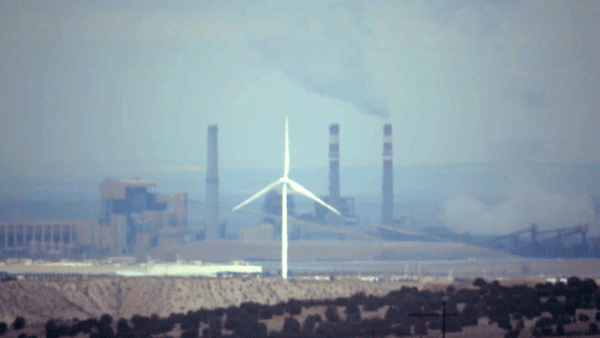The good news: The heat wave broiling Denver will abate soon enough. The bad news: It's only going to happen more often, thanks to climate change.
The city has a new plan to help residents stay comfortable. On Wednesday, the Denver Office of Climate Action, Sustainability and Resilience released an outline to shift the city's buildings to "renewable" heating and cooling. To boil it way down, it's about helping people survive climate change without making it worse.
"This is how we are going to bring cooling to people in their homes so they survive where they are," said Grace Rink, the office's executive director.
Rink said about 30 percent of Denver homes don't have air conditioning. Those buildings tend to be older dwellings in low-income neighborhoods. As Denver temperatures continue to rise, those residents will also be most vulnerable to health risks from excessive heat. Denver's redlined areas are already nearly 12 degrees hotter than nearby neighborhoods, according to the report.
To address the inequity, the plan proposes installing heat pumps powered with renewable energy, focusing on the low-income areas already in need. The machines are basically reversible air condition units. In the summer, air-source heat pumps extract heat from inside homes and force it outside. In the winter, the process can be flipped to warm a home.
Natural gas is almost always used to perform those last two tasks in Denver. According to the city, 97 percent of gas consumed in buildings is used to heat up indoor spaces and water. The combined output of all those burner tips represents about a quarter of the city's total greenhouse gas emissions.
A switch to all-electric heat pumps could help the city reduce its emissions. Xcel Energy has promised to provide 80 percent of its electricity through renewable energy by 2030. At the same time, a shift could help improve indoor air quality and reduce the risk of carbon monoxide poisoning.
Cost is the main barrier addressed in the policy outline. All-electric heat pumps are usually more expensive than comparable gas appliances. In Denver, gas is also cheaper than electricity per unit of energy -- the tradeoff is that the price is more volatile. One example is the deep cold snap earlier this year that caused natural gas prices to spike.
The plan also outlines how buildings can cost-effectively ditch their gas furnaces and water heaters by replacing appliances as they wear out. According to the report, the upfront and operating costs of an electric replacement are only slightly higher than a standard gas appliance. To keep those prices down, buildings could also opt for one of a number of "partial electrification scenarios," like keeping a gas furnace as a backup for especially frigid nights.
The report has numerous big ideas for programs, but no concrete steps on applying for rebates or low-interest loans to make the switch.
Rink said a news sales tax for climate projects could help out with cost. Voters approved the increase last year, which should add about $40 million a year to city coffers. Part of the money could be used to help reduce the cost of electric heat pumps.
"If we do develop those incentive programs, we actually have the money to put behind it," Rink said.
The plan includes numerous other strategies to encourage electric heating and cooling, like new building codes, rapid permitting, demonstration programs, advertising campaigns and more.
Those efforts could help bring Denver closer to its goal of lowering emissions to 80 percent below 2005 levels by 2050. The city hasn't always kept with its ambitious promises in the past, however. In 2018, it aimed to cut fossil fuel use by 50 percent compared to 2012.
It didn't work out. From 2016 to 2018, the city was actually burning slightly more fossil fuel compared to 2012, mostly due to increased use for transportation and natural gas.














